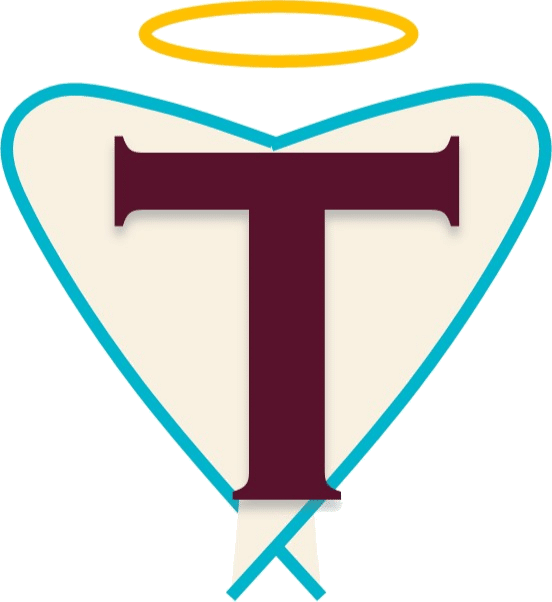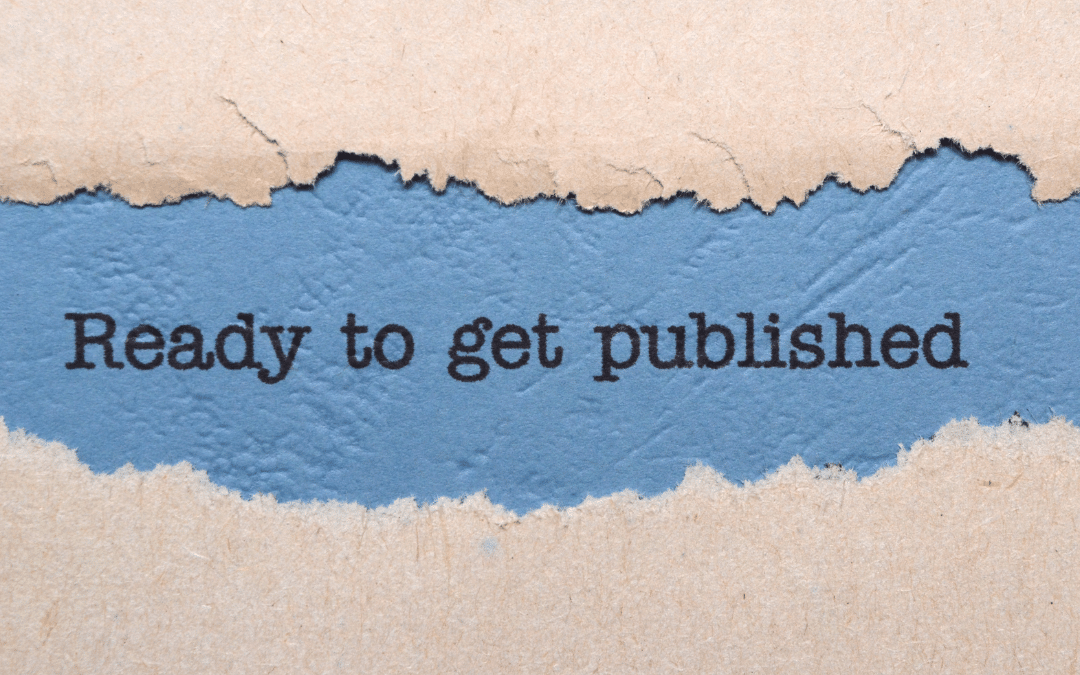When it comes to self publishing through Amazon, otherwise known as KDP, there are far too many touting how easy it is to make money. Can you make money self publishing through Amazon? Absolutely. But is it easy money? Well…let’s talk about that.
What is KDP?
KDP stands for Kindle Direct Publishing and is operated through Amazon. It’s a platform that allows writers, even new ones, to self publish their works online. Authors can publish and sell their books in digital, hardcover, and paperback form. Once live, these books are available directly to customers on the Amazon site using its KDP platform.
KDP VS KDP Select
As you get started on your journey to make money self publishing, you might notice that there’s a difference between KDP and KDP Select.
KDP is as described above – a simple way to publish your book.
With KDP Select, though, you can increase your royalties and thereby increase the money you make self publishing your ebooks. With KDP Select, you are giving Amazon exclusivity rights. This means your ebook is available exclusively through KDP. You can’t, for example, offer a free copy to e-mail subscribers or give away a free PDF version in a contest. Fortunately these exclusivity rights are only 3 months at a time, but it’s certainly something to consider. KDP Select does offer the benefits of being included on Kindle Unlimited should you be publishing an ebook. Along those lines, KDP Select also makes your book available on the Kindle Owners’ Lending Library.
Is KDP still profitable in 2023?
If you’re on TikTok and interested in self-publishing even the slightest bit, you’ve probably had dozens of videos pop up on KDP. It probably makes you wonder – is KDP even still profitable with the amount of competition out there? The answer to that is a resounding yes – I wouldn’t be sharing this post otherwise! But it comes down to finding a niche that is relevant and not super competitive. Long gone are the days of putting together a low content book with a generic cover and calling it a day.
Not to mention once Amazon takes its cut, you can’t expect it to be easy to make money with self publishing on a long term basis. And certainly not great money, at that…

That said, there are definitely some solid reasons as to why KDP is an income stream still worth looking into.
Low Upfront Cost
The upfront cost to publish with KDP can be literally zero if you’re decent at graphic design. If you have the time to manage each piece of your publishing – writing, editing, formatting, cover design, and marketing – then that’s all it’ll cost you: time.
Even if you need to outsource a few pieces, the cost is minimal compared to traditional publishing. As an online business strategist, I’ve personally helped clients put together books in which the only part they did was writing it, and it still only cost them around $300 to publish.
No Physical Inventory
You also don’t have to worry about investing in or maintaining an inventory. KDP is POD (print on demand). The only time a book is printed is when an order is made. And of course you can – and should – have ebook versions, too! You can order author copies at print cost plus shipping if you did want to maintain a small inventory. This is nice to have should you want to offer signed copies of your book or do an in-person book reading.
Publishing is quick
Publishing a book through KDP is typically a fairly quick process. I will say that I’ve noticed low content books tend to take longer, but in general you can expect a less than 72 hour turnaround time. Traditional publishing usually means waiting months to launch your book! One thing to note, though, is that you cannot make any edits or adjustments during the review process. So make sure you triple check everything before hitting that button so that you don’t extend your review time.
So do low content books sell?
Low content books are typically lined books with a cute cover, but can also be things like coloring or activity books.
Examples of low content books include:
- Journals/Diaries
- Guest books
- Planners
- Adult coloring books
- Kids activity books
- Accounting ledgers
- Workout log book
- Travel journals
These low/no content books used to be a way to make money self publishing in a very short amount of time. But as mentioned above, that’s no longer the case given how many people have jumped into the fray. That’s not to say low content books can’t be profitable. It comes back to finding a niche or being super creative in your design.
For example, this journal is simply a lined notebook but if you’re someone who happens to love opossums and be notebook obsessed, it’s an absolutely perfect gift:
Me – it’s me. I’m opossum and notebook obsessed…but I’m also the creator of said notebook. 😉
Validating Your Book Idea
Regardless of what kind of book you want to publish through KDP, validating your idea is essential. If you want your book read by the masses, you need to make sure those masses want to read your book!
To validate your book idea and actually make money self publishing through KDP, ask yourself these simple questions:
Are there similar books to yours already published?
There’s so such thing as an original thought. Harsh, but true. If there aren’t at least a dozen books similar to yours available on Amazon, it’s because your book…well your book idea probably isn’t too great. That’s not to say there have to be books that are exactly like yours. For example, if you’re planning to publish a cookbook on teaching kids to make macarons, you can count books like “teaching kids to bake” and “the art of macarons” as similar enough.
Are there enough buyers?
Obviously you want to find that sweet spot between narrowing in on a specific niche and making it something people actually want to buy. This goes back to making sure there are books similar to yours available, and that people are actually buying them. Which brings us to the final question –
Can you compete?
Hopefully you have – or hire someone to help with – a marketing plan for your book. But before you even get into that, you need to make sure you can in fact compete in the marketplace. For this, you’ll want to look at the best seller rankings of the top books in whatever category you’re publishing in. So after finding those similar books we talked about above, look under their product details and locate “Amazon Best Sellers Rank.”
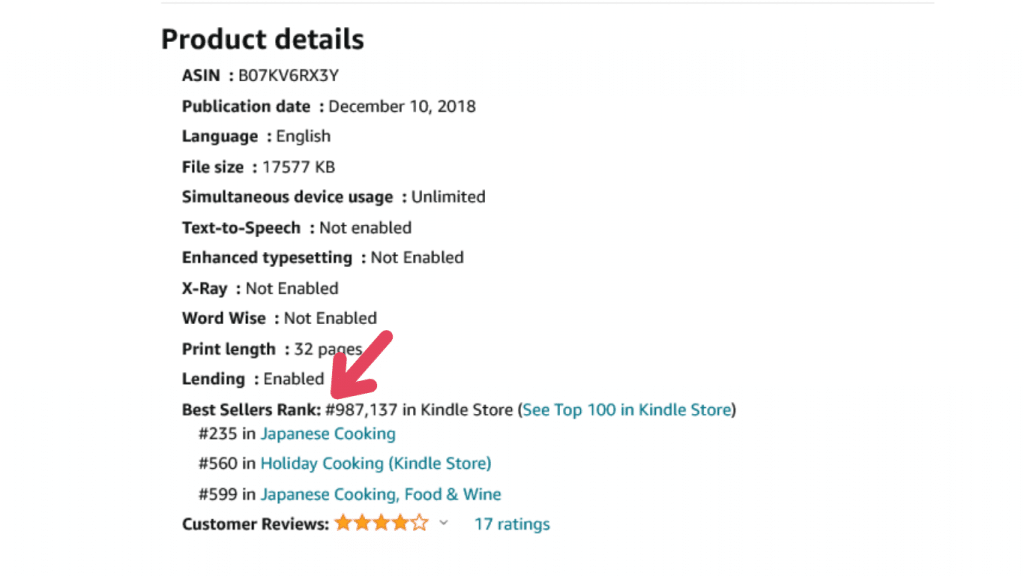
The higher the rank for these books, the better they sells – but also the harder they’ll be to compete with. You want to make sure your book falls into a category where the average rank is neither too high nor too low. As a general rule, look for rankings from 1,000 to 30,000 with those top books. Anything less than 1,000 and you’re looking at great sales, but incredibly competitive. Anything over 30,000 and it may not be competitive, but it also probably doesn’t sell well.
Creating Your Book
Creating your book typically goes one of two ways – Microsoft Word or Canva. If you are creating a mainly text only book, Microsoft Word is absolutely the way to go. Start the document in the size your book will be, typically 6×9. Once your book is written, proofread, and edited, you can save it as a PDF and you’re basically good to go.
If you are creating a book that involve graphics – ie cookbooks, journals, workbooks, children’s stories, etc. – then trust me when I say you want to just go ahead and start in Canva. Again you’ll set the design to be the size you need and just get started. Make sure you’re using images you have a license to use or ones that you yourself took. Then download as a PDF and you’re all set.
Creating the Cover
Creating the cover can be a bit trickier if you’re not familiar with graphic design. Fortunately KDP offers cover templates that make this process a lot easier. This is again something you can do in Canva. Once you have your template as a PNG file, upload it to Canva. Design your cover over that upload and then delete the template once everything is in place. You’ll be able to proof both this and your actual book once uploaded within Amazon, so don’t worry if you’re not 100% confident in the trim or margins. Amazon will let you know before you even submit for publishing whether or not there’s a glaring error like that.
Publishing Your Book
When it comes to actually getting started with the publishing process, the best place to start is of course on the KDP website. They have quite a few great tutorials to help you get started.
Once you’re in the “Bookshelf” area, simply hit the plus sign over whichever format you plan to first publish in. From there, you’ll fill in the details on your book’s title, description, categories, and keywords.
It’s important to use well researched keywords to better assist your book in ranking well organically. This goes for both the keyword section itself and what you’re writing within the actual description section. I very much recommend including a Table of Contents when applicable.
You also want to choose categories that help Amazon better figure out the kind of book you’re publishing.
Note: These categories are not the same categories as those shown on the book detail’s section. Amazon decides those, these two categories you’re setting now are strictly for the back-end.
Do I need to buy an ISBN?
Once you’ve completed that first page, you’ll move onto the content page. The first thing you’ll need to decide is whether to use the free ISBN or your own.
ISBN stands for Industry Standard Book Number, a unique number assigned to each version of every published book. This also includes every version of every published book. So each paperback, hardcover, ebook, and audiobook edition would each have their own unique ISBN. The nice thing about publishing through Amazon KDP is that you don’t have to buy an ISBN. KDP provides a free ISBN. Now some might want to go the route of paying for an ISBN. There are those who believe a book displaying the name of a self-publisher means bookstores and the like won’t take you seriously. Personally I feel this to be false as we move into an era of self-publishing being the norm and outperforming traditional publishing houses.
Pricing + Royalty Rates
I always recommend to my clients to start as low as possible when pricing their books. Not only does this mean people are more apt to buy it when you first launch, but it gives you room to grow. Why is this important? Because one of the best ways to make a sale once you have an audience established is to say “Hey! Price is going up in X days, make sure to tell your friends!” And we’re all about setting you up to make money self publishing for years to come.
Obviously you’ll also want to check the going rates in your category. If you price too low, people might assume your book is cheap in that it’s low quality. Price it too high, though, and your competitors will win out every time.
Books priced between $2.99-$9.99 are eligible for a 70% royalty minus fees, save for countries in which the 70% is restricted. Over $9.99 and you’re looking at a 35% royalty rate. You can always change your price at any time so it’s worth tweaking until you hit a sweet spot.
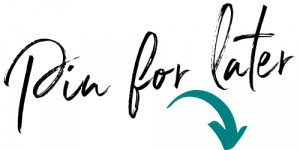
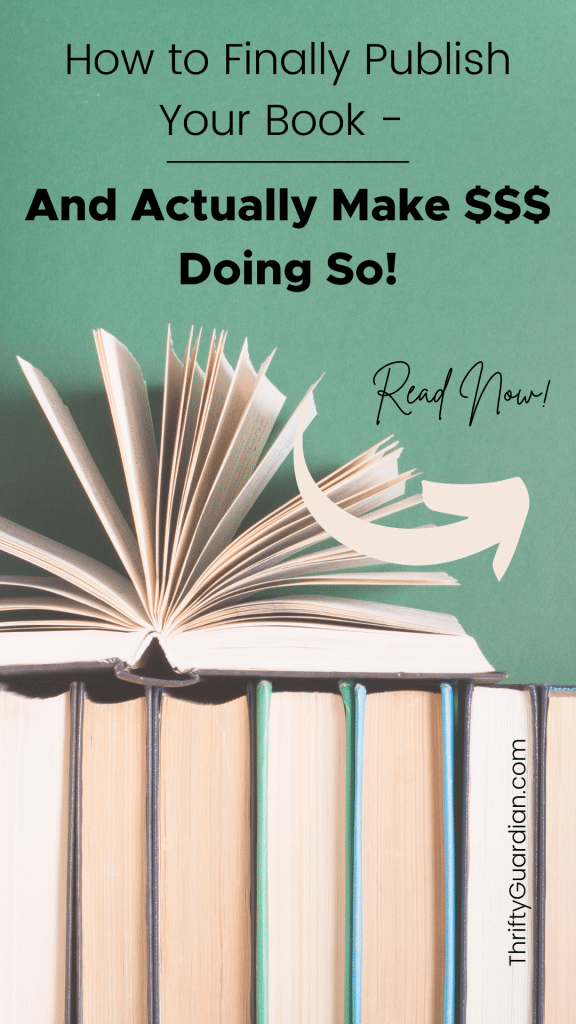
Marketing Your Book
The launch of your book will absolutely determine how easy it is to make money with self-publishing. If you think you can hit publish and watch the money flow…well you haven’t been paying attention.
Please do NOT wait until the last minute to plan your book launch!
Instead, take the time to have a plan in place weeks before you ever start the KDP process. I’m not saying go crazy and throw a book launch party – though if you do, I hope I’m invited! But there are certainly a few steps you can take to ensure a successful launch, such as:
Build a Launch Team
Before you hit “publish” on that book, assemble a team to help you promote your launch. This can be a group of family, friends, and those in your network that would enjoy sharing your book with others. If you’re like me and have a blog, send out an email to recruit help. And of course don’t negate your solid social media presence, put it out there – make the ask! See who in your network would be interested in helping to promote your book.
You should also create a swipe file for your team. This file can be something stored on Google Drive or Dropbox. It houses marketing materials that they can use to keep things easy on them. The easier you make promoting, the more likely your team will be to follow through. Provide them with graphics, copy ideas for social media shares, and a few mock-up images of your book. Those can be made free on sites like Canva or DIY Book Design.
It’s also worth incentivizing your launch team. Offer them a pre-release copy so they can write actual reviews they share via social media. I would also recommend – when budget allows – that you buy author copies to distribute to your launch team once everything is live.
Do Your Own PR
In this day and age, it’s easier than you might think to get some good PR going. Reach out to bloggers who might be willing to allow you to guest post on your site. You are a writer after all! Another great way to generate buzz is to send a quick press release to your local news and radio stations. You can easily find contact emails on most of their websites. Then just look up templates to use online or follow something like this:
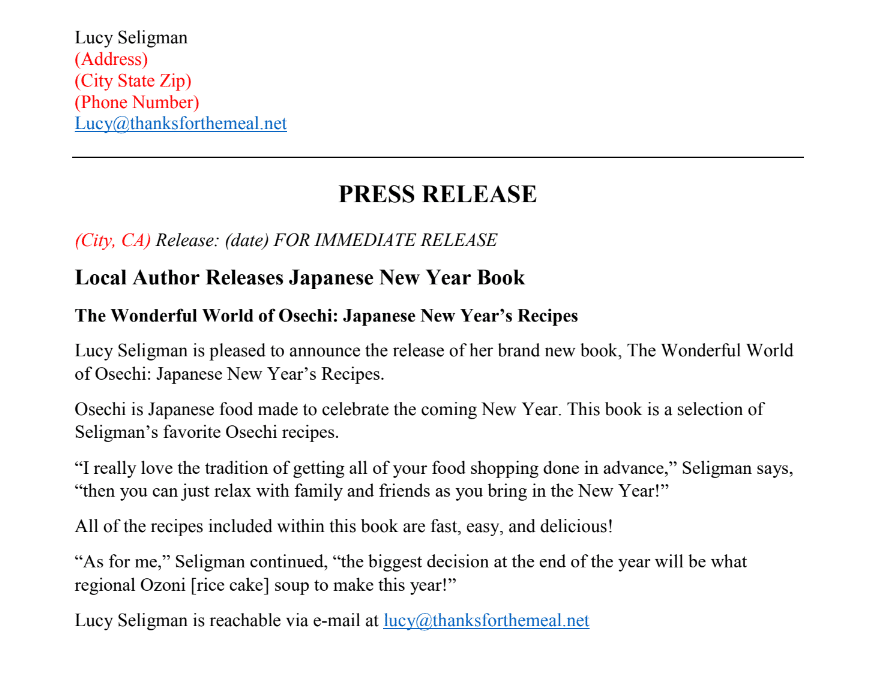
Ask for Reviews
Once your book is live, make sure you’re asking for those reviews! Those first few days that the book is live are critical to long-term success and rankings. If you don’t have anyone leaving reviews within the first few days of going live, the chances of it doing well organically are exceedingly low. This is why having a launch team is essential! It also speaks to ideally having an ebook version whenever possible. You do not want anyone leaving a review without first having the book in hand. If you don’t want them to have to pay for the actual book and don’t have an ebook option, they can still leave a review. Amazon just won’t give it as much credence as verified buyers.
NetGalley + Kindle Select
Here’s a “behind the scenes” tip that I typically only give paying clients – utilize NetGalley and Kindle Select when possible! NetGalley is a website that helps authors promote digital review copies to book lovers and industry professionals. The pricing with NetGalley varies, but it’s worth it when budget allows. There’s a two-fold benefit here:
1. NetGalley means more eyes on your book sooner, providing you with reviews you can use during the launch phase.
2. KDP Select means you can make your ebook free for the first few days, so anyone who has already read it can “buy” it and leave a review a few hours later.
Note: Buyers do not have to have a Kindle to purchase your ebook. Kindle books can be read on Apple and Android products, as well as PCs and most other tablets.
Is self-publishing actually passive income?
We’re over 2,500 words in and I could easily do another 2,500..what do you think?
While you can absolutely make money self publishing through Amazon KDP, don’t go into it thinking it’s passive income or easy money. However, much like blogging, I will say that if this is something you’re passionate about, jump in and trust the money to follow. I truly believe every person on earth has a story worth sharing. I so very much hope this article has inspired you to get started on the path toward sharing yours!
